HARAR, ETHIOPIA — In this land of extremes, you can stand in the hottest place on Earth — The Danakil Depression in the country’s northeast sector — and watch as the thermometer rise to over 50C, as my travelling partner did. Or, as I experienced, you can freeze in its higher elevations when the mercury dips below 0C. Some other extremes: You’re often offered raw beef (the country’s favourite dish — but not for me!) in restaurants except for twice a week (Wednesdays and Fridays) when only vegetarian dishes (fine with me!) are featured — the latter is to appease Ethiopia’s orthodox Christians, who make up the majority of the 102 million population.
More examples:
• I stood in modest village huts made of mud and sticks but was left awed by the country’s dramatic rock-hewn churches carved from stone that rank among the most astounding structures I had ever seen — anywhere.
• I rarely saw traffic — car ownership here is rare and most people walked, jamming the roads with their livestock. Yet, the roads here — built by Chinese investors — were some of the smoothest I had ever travelled.
Travelling the 1.1-million-kilometre expanse of Ethiopia on a six-week mission with CUSO International (formerly Canadian University Services Overseas), I was faced with lots of staggering extremes.
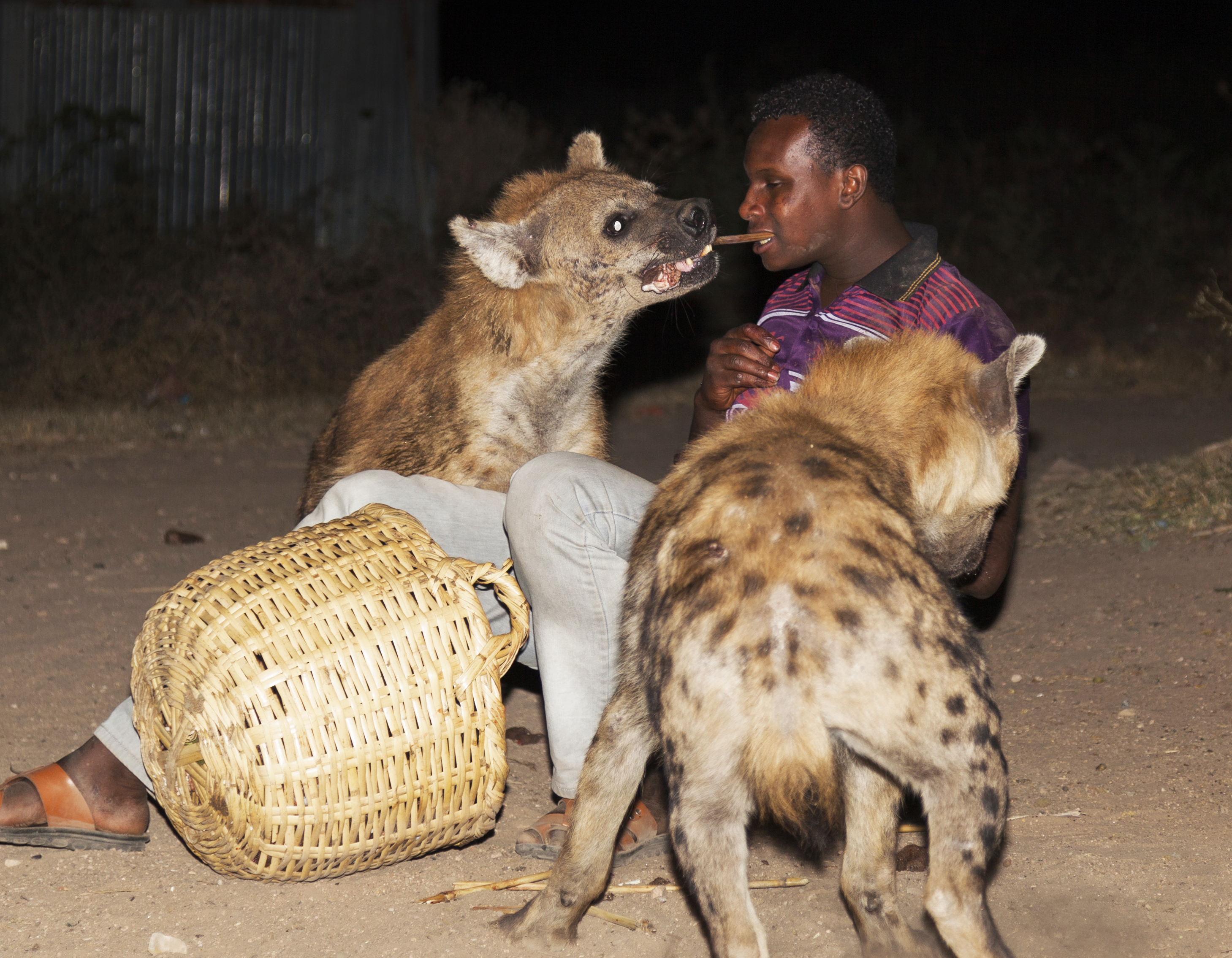
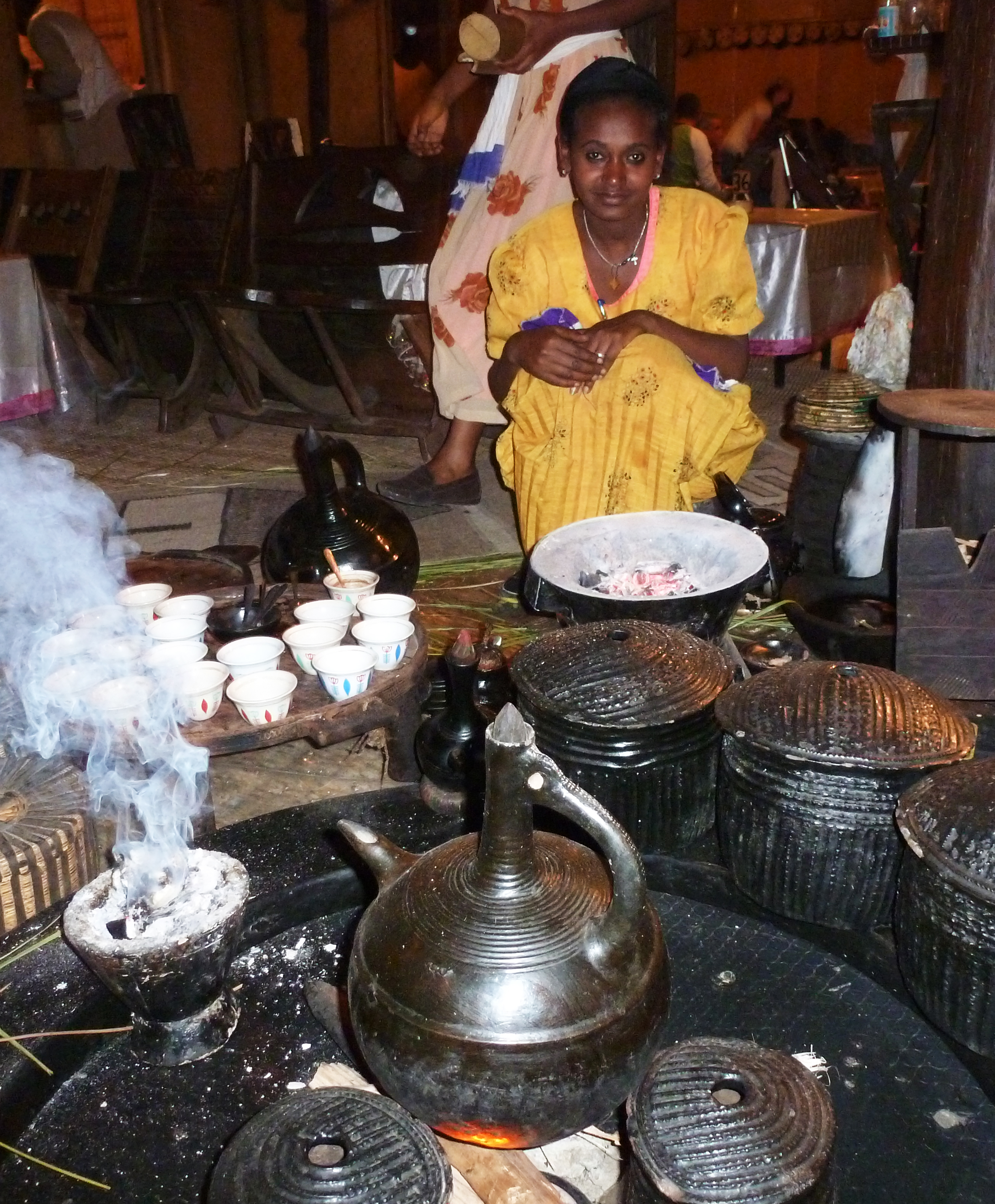
Left: Feeding the hyenas a major tourist attraction. Right: People in Ethiopia are very welcoming.
I was dispatched to Ethiopia with Vancouver-based photographer Ethan Baron to capture the stories and pictures of 35 CUSO International volunteers who were scattered throughout this vast country. We were paired up with a driver named Tamrat, who spoke excellent English and knew the country like the back of his hand.
Our first task was to interview medical volunteers in the eastern medieval walled city of Harar. That’s where we had our initial extreme encounter.
Tamrat drove us to the outskirts of town at Ethan’s request. He wanted to meet someone he had read an article about — the legendary Hyena Man of Harar.
“Abbas Yusuf learned to feed wild hyenas from his father Yusuf Mume Salleh. The father started doing this 45 years ago to keep them from attacking his livestock,” Tamrat explained.
As we crept down a dusty dark street, a young man emerged from the shadows wearing a bright red jacket. Pointing to his basket, he said we could buy some camel meat for the hyenas. A slightly tangy aroma wafted from the basket. The creatures could smell it, too.
We inched forward in the dark and gradually I became aware that we were being followed.
Squinting into the darkness, I saw a dozen set of glowing eyes staring back at me. My hands began to shake and my heart pounded.
“Not to worry, just watch,” said Abbas when he saw the stricken look on my face. He slowly placed some of the camel meat on his back and a thick-shouldered hyena stepped up and delicately lifted it off.
The meat was gone in one swallow. Gulp!
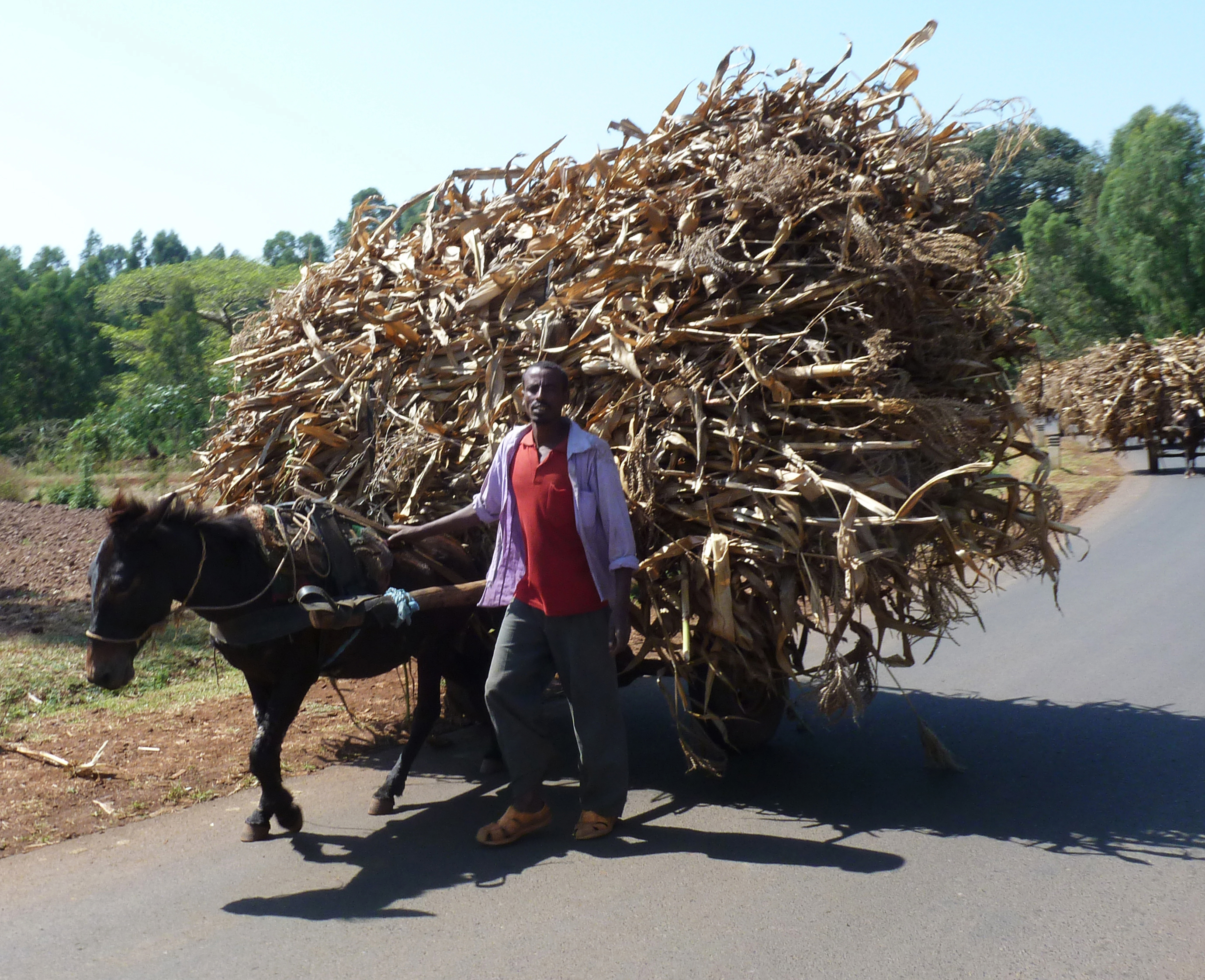
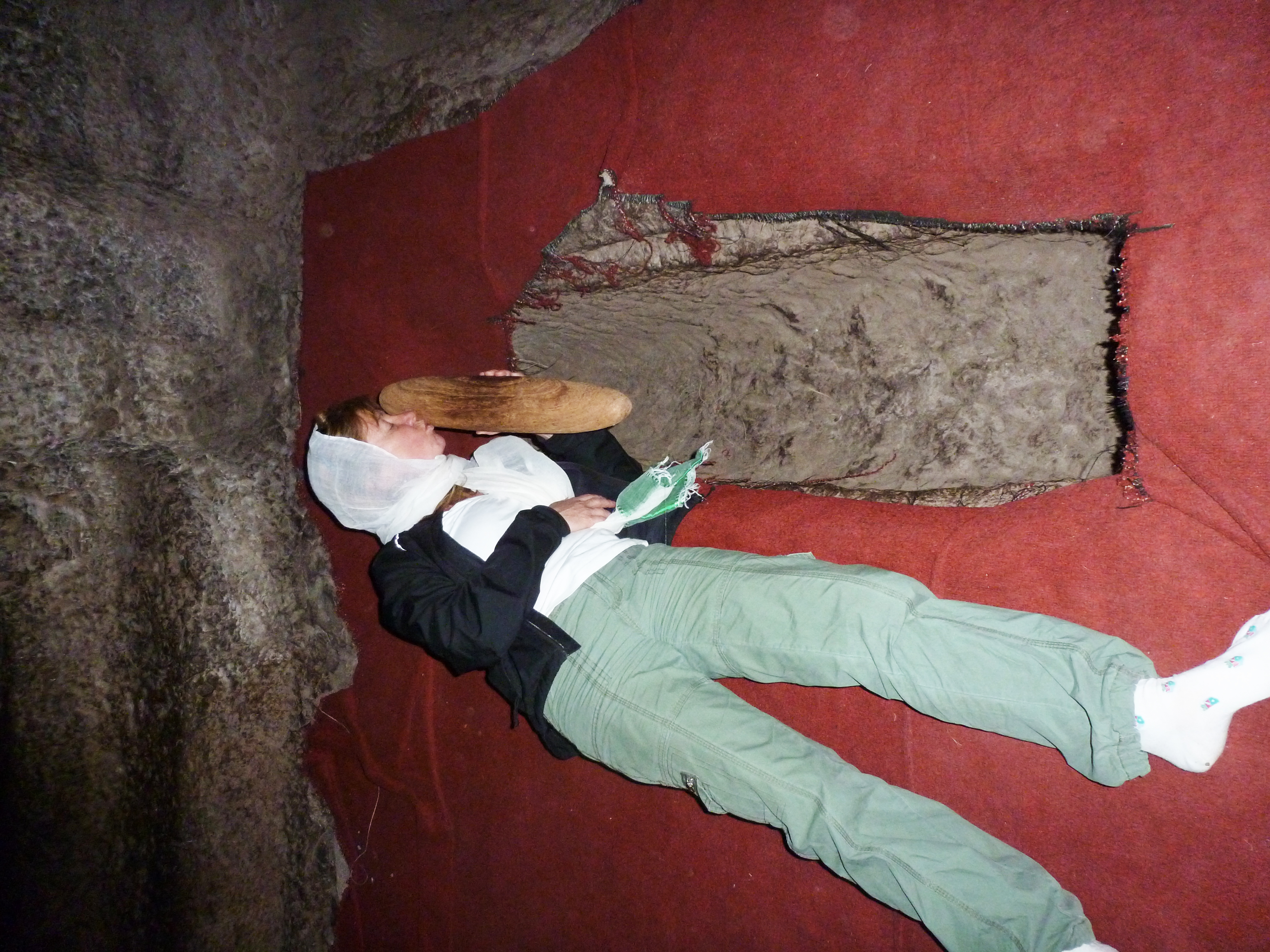
Left: There are few cars in Ethiopia but great roads. Right: Our writer kisses a national treasure.
Then Ethan knelt down and one of the spotted creatures got on its hind legs to gobble up a treat Abbas dangled over Ethan’s shoulder. Frozen to the spot, I was barely able to take a quick photo. When Ethan was done, we scooted back to the car quickly. I didn’t want to be an addition to the hyenas’ dinner menu.
Exploring the rock-hewn architecture of Lalibela was our next adventure. We took a few days’ break from work and drove 600 km north of Addis Ababa to see this astonishing UNESCO World Heritage site.
My guide book said the churches were carved from massive rock formations in the 13th century and took just 23 years to complete.
“They say that angels helped King Lalibela build the churches,” Tamrat explained.
We got there in the afternoon, too late to witness a service, but spotted many elderly men on pilgrimages, sitting outside the structure’s huge wooden doors.
Most of the Ethiopians I met were deeply religious. The majority of the population are members of the Ethiopian Orthodox Church, a denomination that was once part of the Coptic Orthodox Church. Historians, referencing the New Testament, think that Christianity came to Ethiopia in the 1st century when Philip the Evangelist converted an Ethiopian court official. In 330 AD, King Ezana, who governed a portion of Ethiopia known as the Kingdom of Aksum, declared it a state religion.
When we arrived at the site, I could see the churches (there are 11) were not constructed of stone blocks as I had assumed. They were literally hewn from what the UNESCO website refers to as “the living rock” — the region’s basalt and volcanic red scoria.
Interiors were chiselled out from the top down, including doors, windows, columns, floors and roofs. Outside I could see carved drainage ditches and trenches.
After we paid our admission, we hired one of the site’s licensed guides, Zewdu, who told us: “King Lalibela built these churches as a ‘New Jerusalem.’ He did this because Sultan Saladin, a Muslim, had captured Jerusalem in 1187 and denied Christian pilgrimages,” he explained.
All the structures had names connected to the Bible, as did the green sliver of water that divided them — the River Jordan.
North of the river were House of the Saviour of the World, House of Mary, House of the Cross, House of Virgins and House of Golgotha Mikael. To the south were the House of Emmanuel, House of St. Mercoreos, House of Abbot Libanos, House of Gabriel Raphael and House of Holy Bread.
“That’s where Holy Communion loaves are baked,” Zewdu said of the latter. The 11th church, House of St. George (named after Ethiopia’s patron saint), stood alone, connected to the others by a system of trenches.
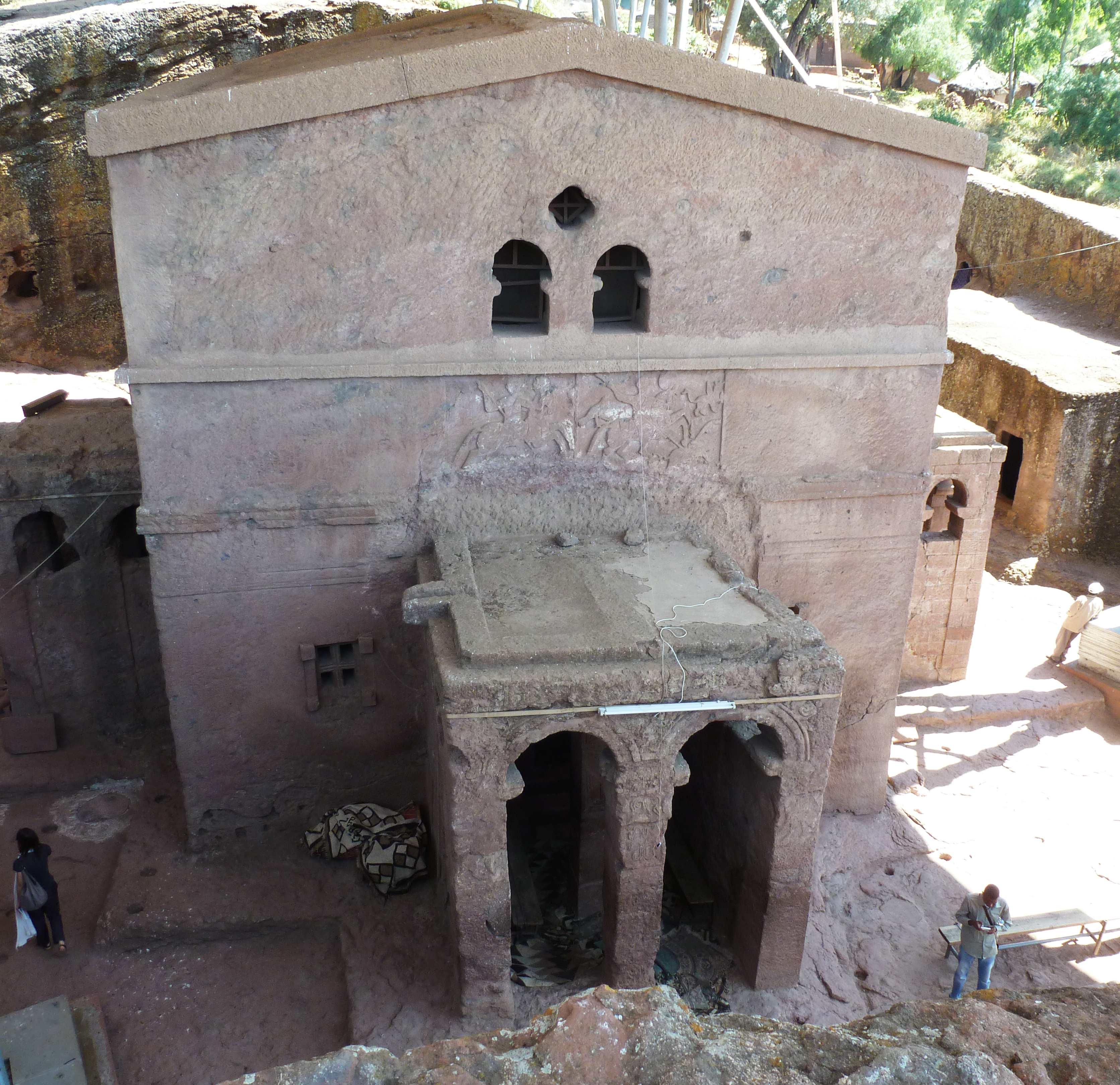
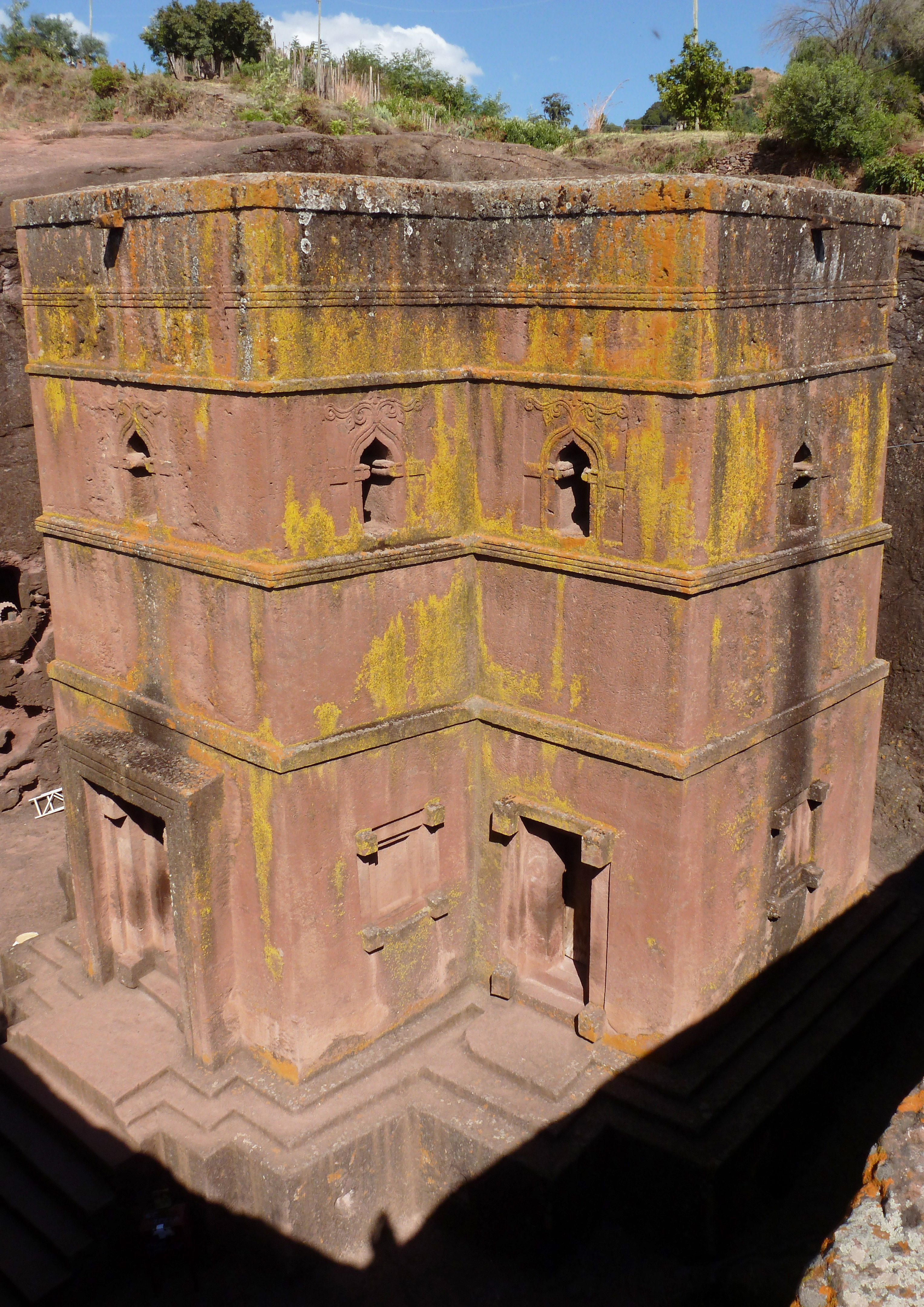
Left: Stone Church is one of the great wonders of Ethiopia. Right: St. George Church is one of the world's oldest.
Climbing through the churches’ tight doorways we passed a few placid priests praying, many of whom Zewdu told me were keepers of the sacred site. There were numerous ceremonial passages and one with steep stairs downwards beckoned. Stumbling along, I found the relentless, inky darkness overwhelming. My chest felt tight, and the walls seemed to close in. I just wanted to get out.
Finally, there was some light at the end of the tunnel and I took a deep breath to calm myself. The name of this passageway? “Purgatory,” said Zwedu.
Ah! That was not a place I wanted to re-inspect.
When we reached the largest church, House of the Saviour of the World, it was swarming with high school students. A few of them lay down by a tomb-like hole in the floor and kissed a loaf of bread. Zewdu gestured that I try it, too, and so I did, feeling a little foolish. It may have been the symbolic body of Christ, but I was not moved by the Holy Spirit. Well, maybe I was cheered a little.
Following the school group, I smiled to myself as they joyfully snapped photos with the old silent pilgrims who flanked the front door.
I was feeling a lot better now. No more dark tunnels for me. As the sun began to set, I only wanted to bask in the golden, rose-tinged light that captured the magic of this ancient, sacred spot.
Information
10 things to do in Ethiopia:
1 Addis Ababa: The city is known as the capital of Africa because it’s the headquarters of the African Union. It’s also home to Africa’s largest market and it’s main museum is where you’ll find one of the oldest humanoids in the world, Lucy.
2 Axum (Aksum): This happens to be one of the oldest cities in Africa and home of the ancient Aksumite Empire. There are ruins around the entire city and you can find some of the best relics and artifacts in the center of the city. Axum also is the supposed location of the Ark of the Covenant.
3 Bahar Dar: Ethiopia’s third largest city gives you access to Lake Tana, which feeds the Nile. One thing you should see is the Blue Nile Falls which are a bit smaller than Niagara Falls, but very scenic.
4 Feed Hyenas in Harar: It’s one of the most popular tourist attractions in Ethiopia and there are two different locations in the city where you are able to feed the animals every night. Harar is also the fourth most holy city for Muslims.
5Somaliland: The self-proclaimed territory is beautiful but one of the most dangerous places on Earth where people get kidnapped. Not a place for tourists, unless you are well guarded.
6 Gondar: The city is home to an entire castle complex as well as a small monastery in a nearby city called Gorgora, which is very impressive.
7 Lalibela: This city was designed and built to be the second Jerusalem. It is home to an extremely impressive array of churches that are carved out of stone including the famous St. George’s’ Cathedral.
8 Simien Mountains: A UNESCO World Heritage site, the Simien Mountains are often called God’s playground because of their unique formations.
9 The Omo Valley: Much like the Maasai in Kenya, this is one of the only places in the world where you can still find indigenous people that haven’t been influenced by the outside world. A very unique look at the different cultures in the country and how they live. The south is also an excellent location for African safaris; many people are surprised that Ethiopia actually does offer safaris.
10 Erta Ale: Also known as Ethiopia’s “smoking mountain,” this is in one of the hottest regions on the planet and is home to two lava lakes.
About the Author
A Toronto-based traveller, writer and communications specialist, Maureen combines her wanderlust with a drive to do good in the world. When she is not gazing at the Northern Lights in Norway, sweating in a Mexican temazcal or stroking the soft fur of lion cubs in South Africa for a story, Maureen can be found sharing her expertise and building the capacity of people in developing countries. From buying produce in the local markets to checking out a new city's hidden nooks and crannies, she revels in soaking up the culture and savouring the cuisine. Her award-winning articles reflect her natural curiosity and love of life, no matter where she happens to be.